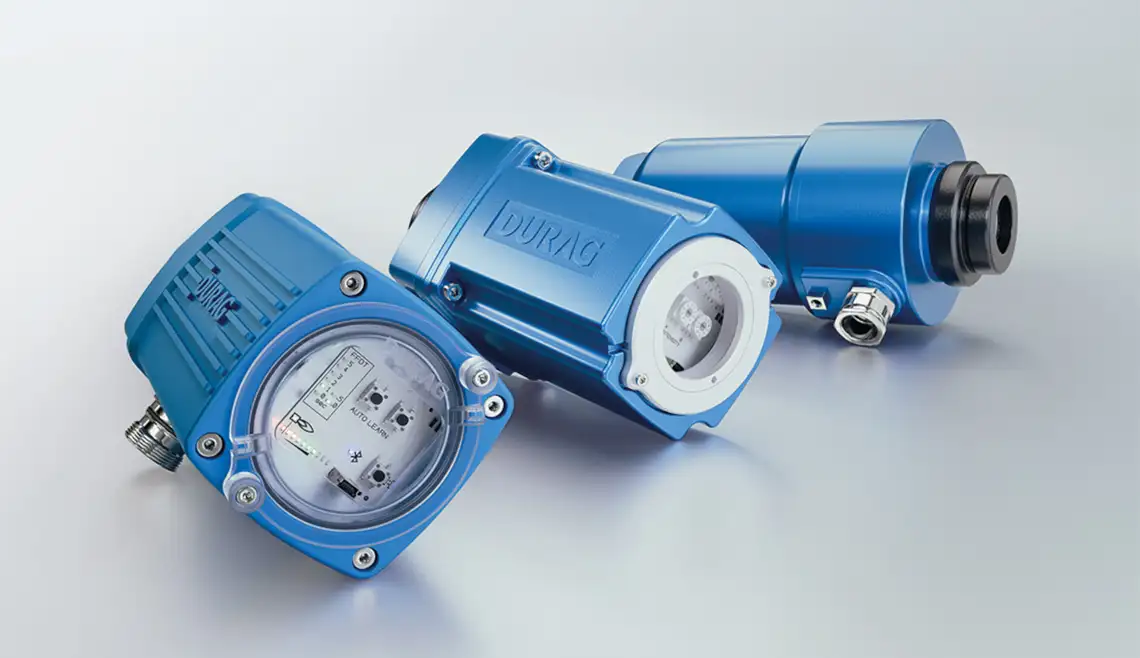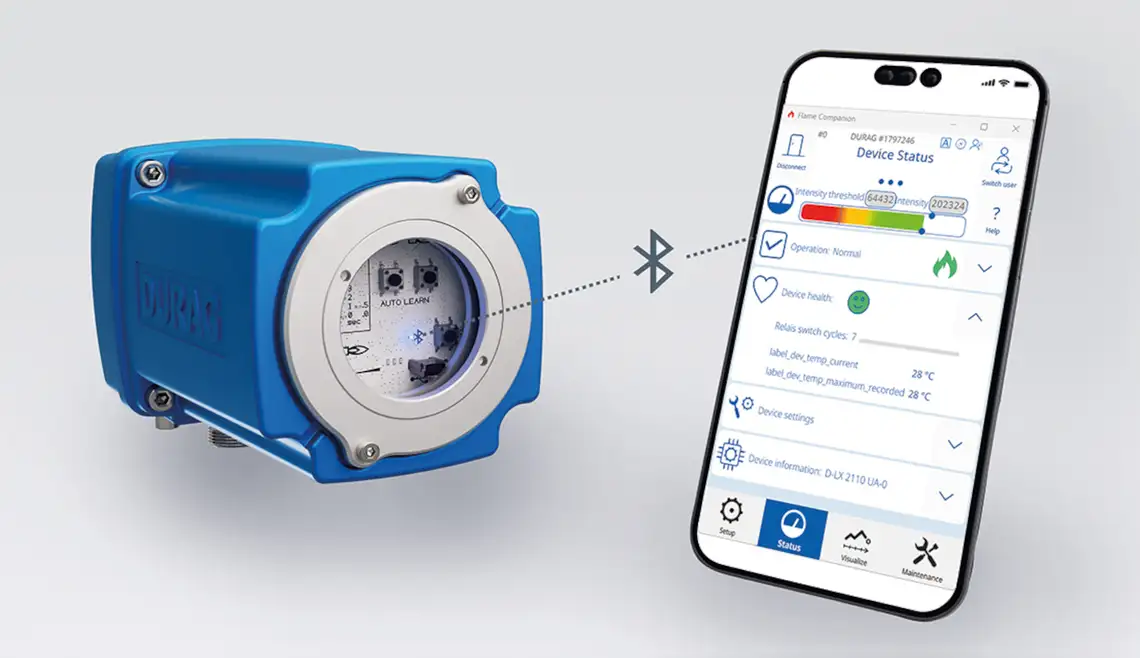
- Solutions
- Combustion and Safety Monitoring
- Flame Monitoring
Flame monitoring
Flame monitors from the DURAG GROUP are a key element of the safety technology of combustion plants that provide a fail-safe assessment of whether a burner flame is present. If the flame in a combustion system goes out unexpectedly, any further supply of fuel could build up in the combustion chamber and cause a dangerous explosion if ignited. It is therefore essential for plant operators to continuously monitor the presence of an intact flame.
Highest level of safety combined with high availability
In addition to their core function, our flame monitors also measure the properties and stability of the flame, offering valuable additional functions that support the plant operator in optimizing processes in terms of operation and energy efficiency. Our flame monitors are not only certified in accordance with many of the applicable laws and regulations in place around the world, they can also be used in a wide range of operating conditions (ambient temperatures, Ex zones, availability of fiber optic systems).
Flame monitors consist of a flame sensor that measures physical properties of the flame and processes them electronically. The two main physical properties used are the electrical conductivity of the flame and the radiation it emits. In addition to the flame sensor, a control unit is also required to process the signal, control self-monitoring and make the “Flame ON/OFF” decision. The two elements can be set up in separate housings or together in one housing as a compact flame monitor.
With their dual-channel architecture in the design of the devices, DURAG GROUP flame monitors have been offering the highest level of safety combined with high availability for decades now.
Optical flame monitoring
Our optical flame monitors monitor the flame effectively and without interference by continuously monitoring and measuring the flame radiation. Depending on the variant, they analyze the average intensity of radiation or the strength of its fluctuation in the ultraviolet, visible or infrared spectral ranges, or several of these ranges, for the properties typical of the flame. A comparison with a threshold value defined during installation and the selection of a spectral range optimized for the flame radiation allow differentiation from the signals of similar flames in a multi-burner plant. Optical flame monitors also monitor the flames in high-performance burners and with changing fuels absolutely reliably and safely.
From monitoring to supervision
The future of flame detection belongs to intelligent flame monitors that can be individually and easily adapted to the requirements of modern industrial plants. The latest generation of our optical flame monitors combines the highest safety standards and flexibility with intuitive operation and smart networking. With the DURAG Flame Supervisor, we offer you a compact, fail-safe, and future-proof solution for monitoring flames of all fuels. The connection to the Flame Companion app allows you to conveniently and easily set up and evaluate the compact flame monitor.
Ionization flame monitoring
Our ionization flame monitors monitor the flame effectively and without interference using a metallic ionization electrode that must be immersed in the flame. The burning flame establishes an electrically conductive connection between the ionization electrode and the burner or ignition burner mechanism as ground potential. At the same time, the electrically conductive flame acts as a rectifier for the ionization current. This ionization direct current signal is measured in the flame monitor and used for the “Flame ON / OFF” decision. Ionization flame monitors are characterized by excellent spatial selectivity and are used in the vast majority of ignition and pilot burners.



